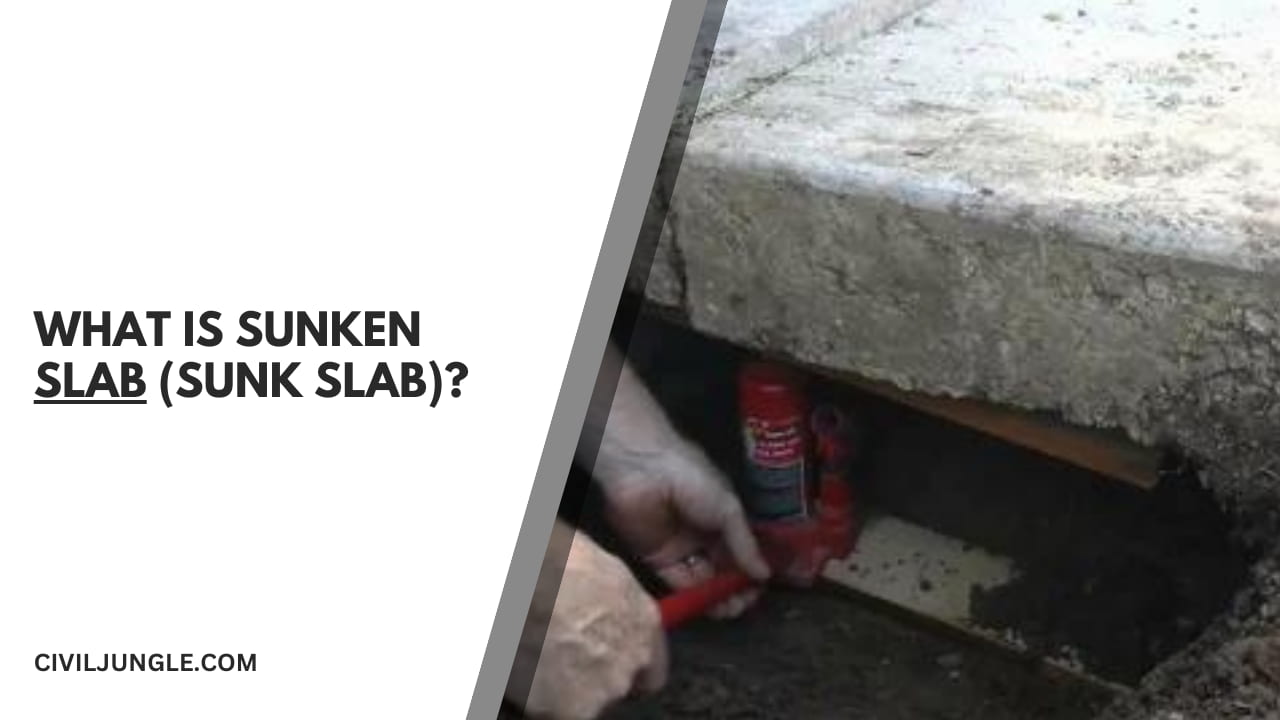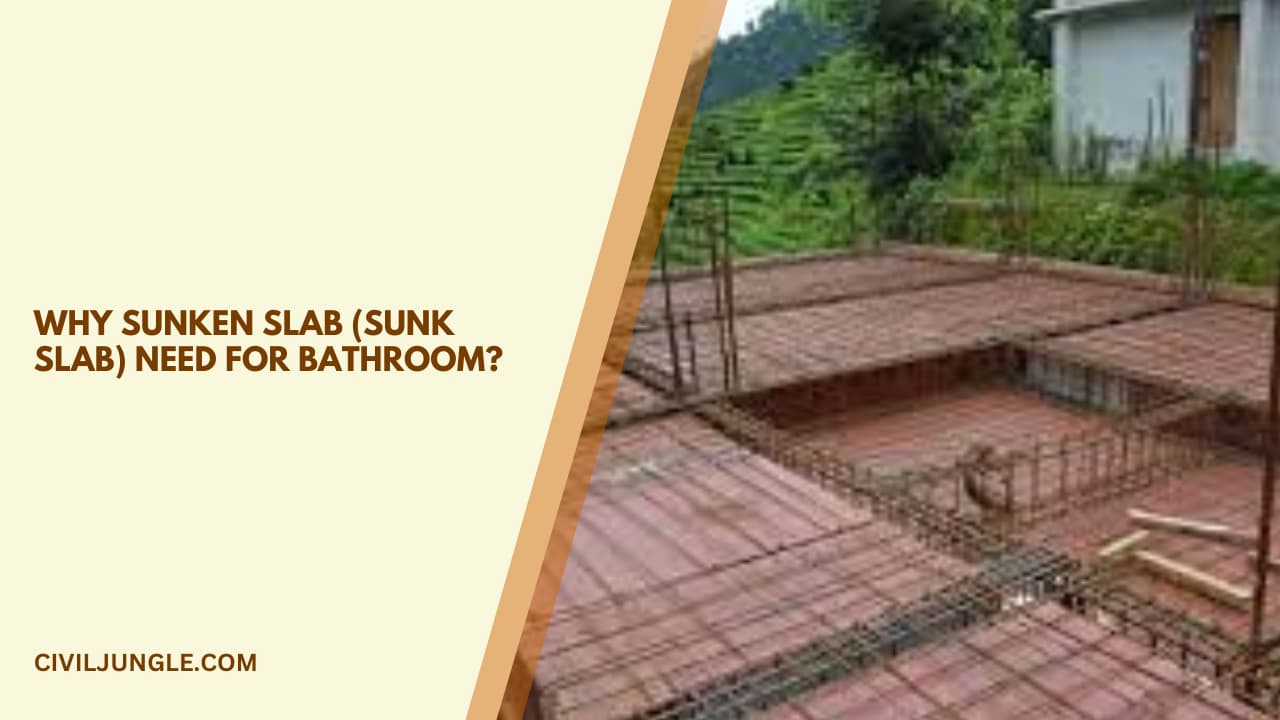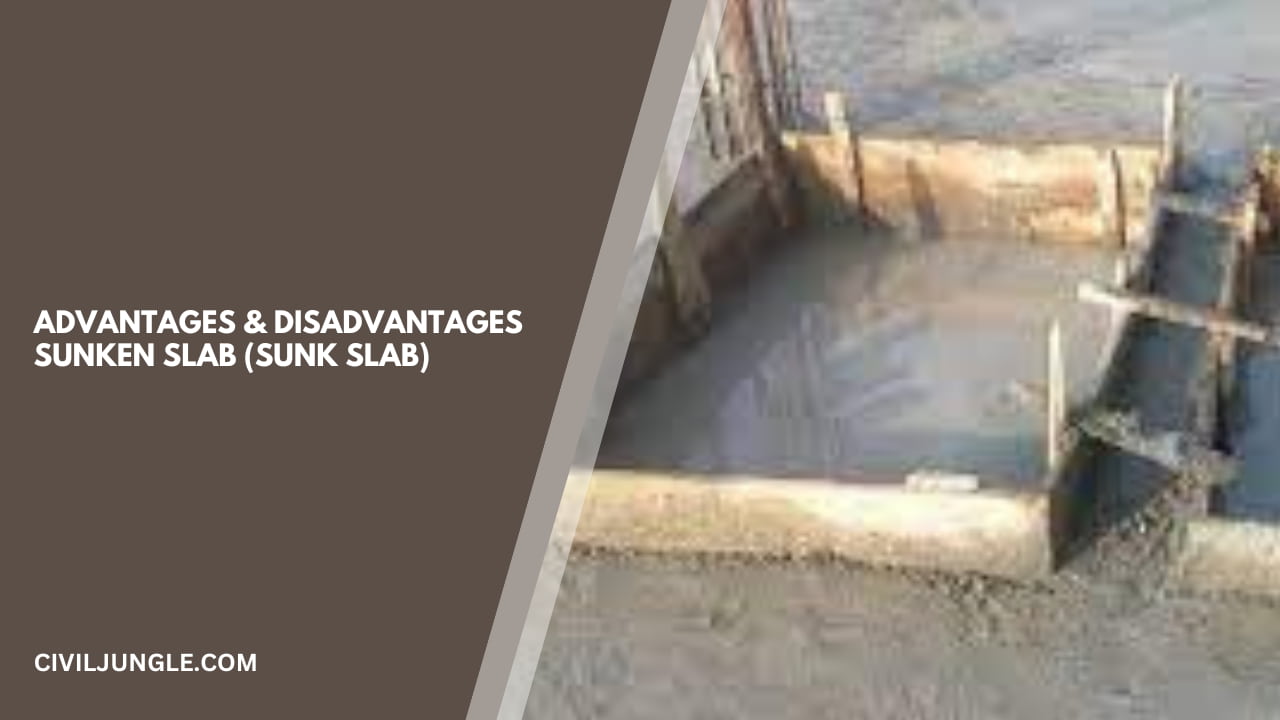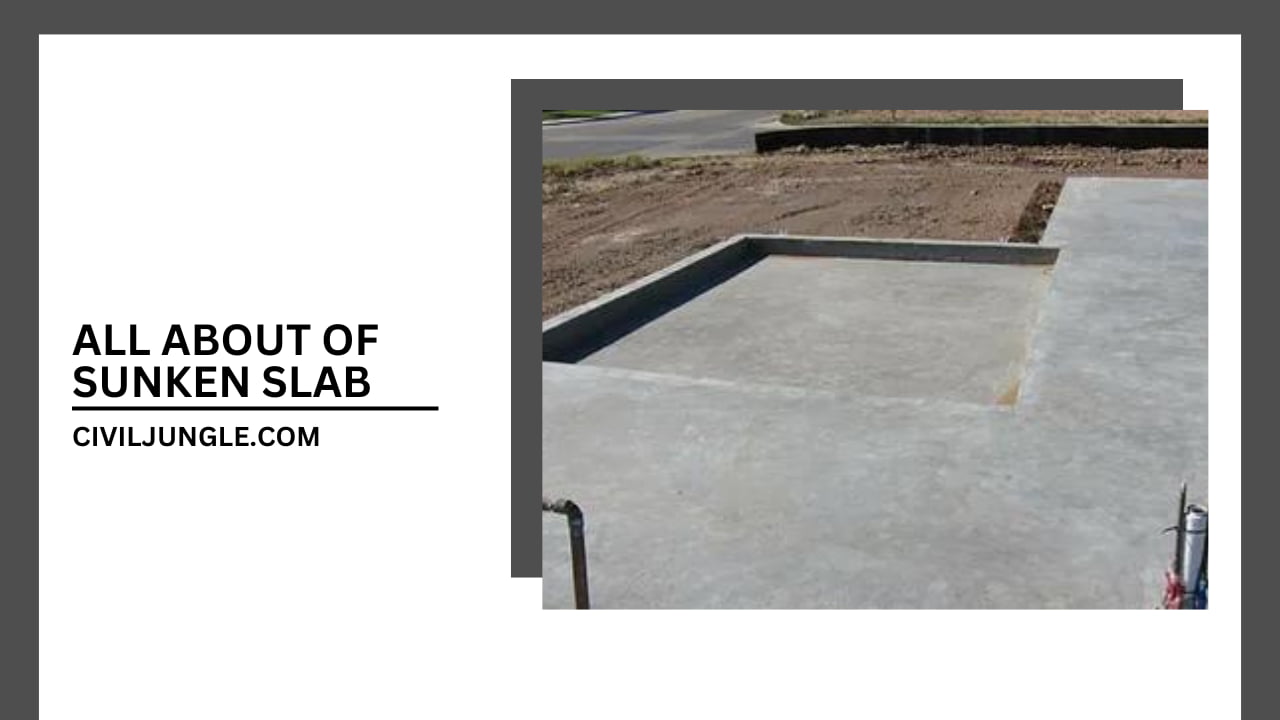What Is Sunken Slab (Sunk Slab)?
Important Point

This system is accepted to provide an easy way to install sanitary products and built eye-catching views in those areas. Furthermore, all pipe systems remain below the floor.
Hence extra care required while constructing a sunken slab; otherwise, dampness or water leakage may happen in the future.
This kind of construction require well trained or experienced workers to tackle all aspects very well by considering future visions related to the maintenance of those areas.
Also, read: M30 Grade of Concrete Mix Design Procedure with OPC 53 Cement
Why Sunken slab (Sunk Slab) Need For Bathroom?

Sunken seating areas aren’t just for the interior of the home but may be great outdoors.
Sunken slabs, often referred to as sunken slab for toilet or sunken bathroom, are used in the bathrooms, toilets, and washing place where we have our washing machines.
Also, read: What Is Spalling Concrete | Causes of Spalling in Concrete | Repairing Concrete Spalding
Applications of Sunken Slab (Sunk Slab)
Following are the main applications of a sunken slab
The main area where this slab, often detailed as sunken slab details, is adaptable is the washroom or in some unique architectural design where sanitary arrangement takes place.
In some cases where the inverted beam is there during the main slab at that time, this sunken slab is the only way to keep the top surface usable without any obstacles of beam height. This kind of situation may find during staircase landing.
Also, read: How to Calculate Staircase | Concrete & Bar Bending Schedule (BBS)
How to built sunken slab (Sunk Slab) or points keep in mind while construction:
The areas where the sunken slab section or sunk slab section adopted in mostly watery places hence, water drainage systems preferable to make it waterproof.
Use of plasticizer during construction to stay away from dampness problems in the future.
Advantages & Disadvantages Sunken Slab (Sunk Slab) :

Advantages of Sunk Slab
- All plumbing pipes are concealed inside the slab.
- Need special plumbing fixtures to reduce noise during usage of bathroom.
Disadvantages of Sunk Slab
- The decrease in the height of the slab.
- Slab, waterproofing and brick bat takes more time to construct as compared to Sunken Slab.
Repairing a Sunken Concrete Slab
Here, three different methods of repairing a sunken concrete slab are as follows.
- Replacing or Repairing Concrete: If your concrete has cracked dramatically, or deteriorated, it might make sense to replace your sunken slab. A new slab has its appeal, but a new pour will most likely not match the concrete in color or texture.
- Mud Jacking: Mud Jacking, a method sometimes used when retaining wall weep holes clogged, is a common term for lifting sunken or settled concrete.
- Polyurethane Foam: Polyurethane foam injection uses a closed cell polymer foam to lift concrete slabs.
How Much Does It Cost to Repair Sunken Concrete?
According to HomeAdvisor.com, the online home improvement experts concrete slab repair costs only $850. Expenses can vary, but most homeowners spend between $500 and $1,207 for concrete lifting. Simple jobs can cost as little as $300 and, on the high end, mudjacking charges may range up to $2,075 in total.
Can You Pour Concrete Over a Sunken Slab?
If some of your concrete slabs have sunken meaning that they have sunk over time around your home, you can fix the damage. The two most popular ways to fix sunken concrete slabs are replacing the concrete as well as raising the concrete slab back to its proper height. After that, new concrete will be poured.
Like this post? Share it with your friends!
Suggested Read-
- Definition Efflorescence | Efflorescence in Concrete
- What is Plum Concrete | Application | Mix Design | Methodology
- What Is Honeycomb In Concrete | Cause | Cure | Type of Grouting
- Why Is Polymer Mortar/Concrete | Type of Polymer Mortar/Concrete
- What Is Cover in Concrete | Clear Cover in Beams, Slab, Column, Footing
- What Is Workability of Concrete | Factors Affecting Workability | Test |Errors
- Concrete Mix Ratio | What Is Concrete Mix Ratio | Type of Concrete Mix Ratio
- What Is Rat Trap Bond | How to Use | Advantage & Disadvantage of Rat Trap Bond


This is really informative post. You can also avoid sunken slab. You can adopt 2 methods. Underslung Plumbing and Raised the toilet floor. But these methods have advantages and disadvantages.
For the elderly, raising the level is not advisable at all. A sunken slab with Professional Plumbing is ideal with appropriate waterproofing.